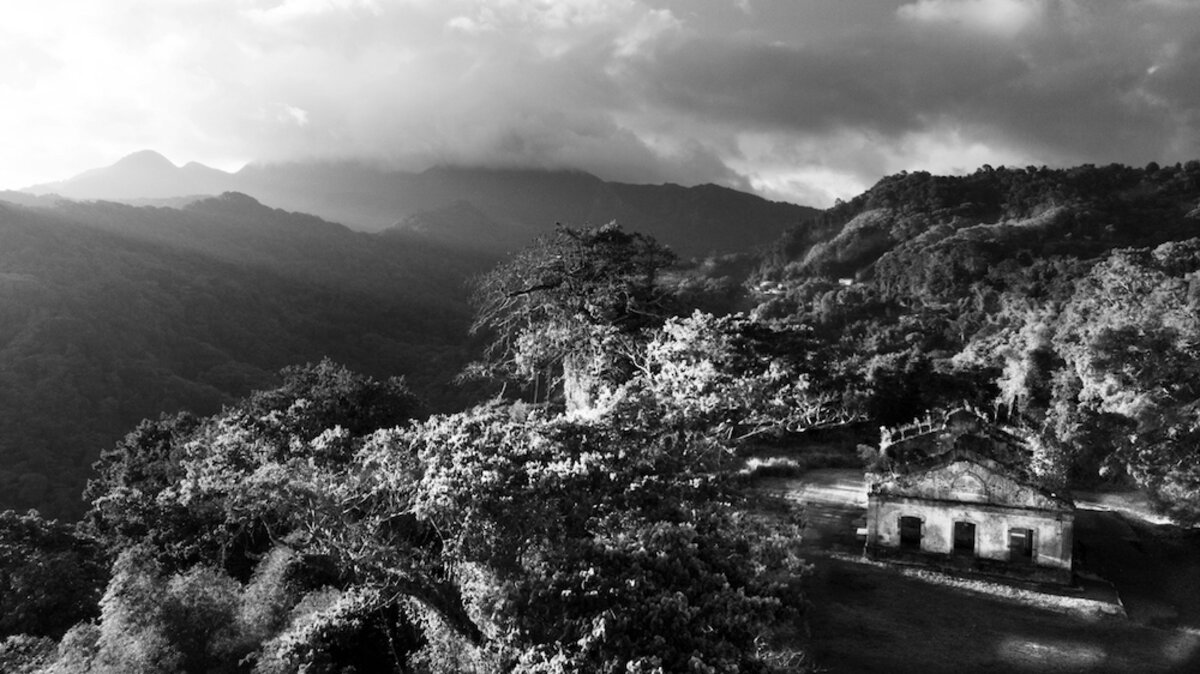
Enlargement : Illustration 1

April 28th 2019: the remains of the French military camp of Balata, on Martinique, where a mutiny led to the liberation of the island in 1943.
In 1940, following the defeat and occupation of France by Germany, the high commissioner for the French Caribbean islands, Admiral Georges Robert (1875-1965), placed them under the authority of the Vichy regime, the pro-Nazi collaborationist puppet government of France led by Marshall Philippe Pétain.
For the inhabitants of Martinique, one of the largest of France’s Caribbean territories, living conditions soon deteriorated. The naval forces under Robert’s dictatorial control enforced order on the island, which was subjected to the laws of the Vichy regime, but this was met with resistance from all spheres of local civil, political and cultural society.
Numerous men and women, known as “les dissidents”, decided to actively join up with the Free French Forces (FFF) led by General Charles de Gaulle in exile in London, answering his call, broadcast on radio on June 18th 1940, for his compatriots to rise up against the German occupation and the Vichy authorities.
Many of the” dissidents” fled the island clandestinely at night, taking to the sea in fragile craft – the pirogue-like gommier and the flatter yole – to head for the then British island territories of Dominica and Saint Lucia, respectively to the north and south of Martinique. Numerous attempted crossings ended in failure and deaths.
But those who succeeded in reaching Dominica and Saint Lucia were officially registered by FFF representatives and sent on to the United States for military training at the Fort Dix base in New Jersey. They would subsequently take part in allied military operations in North Africa, Italy and subsequently in the liberation of mainland France.
Meanwhile, on June 29th 1943, around 220 French troops – made up of local men and others from France’s African colonies – stationed at the camp of Balata (photo above), situated about ten kilometres from Fort-de-France, the capital of Martinique, mutinied against Admiral Robert. Led in the rebellion by their pro-Gaullist commander Henri Tourtet, and joined by a revolt among the civil population, they overran the military commanded by Robert, and forced the admiral to flee the island, which subsequently came under the control of the Free French Forces.
Tourtet was made a lieutenant-colonel and tasked with creating the 5th antillais (West Indian) and Guyanese march battalion, the BMA5, made up of volunteers mostly from Martinique, the neighbouring French Caribbean island of Guadeloupe, and from French Guyana. They were sent by sea to North Africa where they took part in campaigns in Morocco and Algeria before landing for combat in southern France. In the spring of 1945, they were given the task of taking German army positions on the Atlantic coast, at the Gironde river estuary, and although successful, Tourtet and two of his officers, both from Martinique, died in the fighting.
Portfolio
The extraordinary tales of wartime resistance on the French Caribbean island of Martinique
1 photo
When general Charles de Gaulle, exiled in London, called on his countrymen in June 1940 to rise up against German occupation of France and the puppet pro-Nazi Vichy regime, his words inspired resistance not only in mainland, but also thousands of kilometres away across the Atlantic, in the French-governed islands of the Caribbean. On Martinique, many young men and women made perilous crossings to the British islands of Dominica and Saint Lucia to join up with the Free French Forces and fight in Europe. These are some of their extraordinary stories, told in picture-portraits by photographer Sylvain Demange and historian Sylvie Meslien, and which are part of an exhibition now showing in the Martinique capital Fort-de-France.



